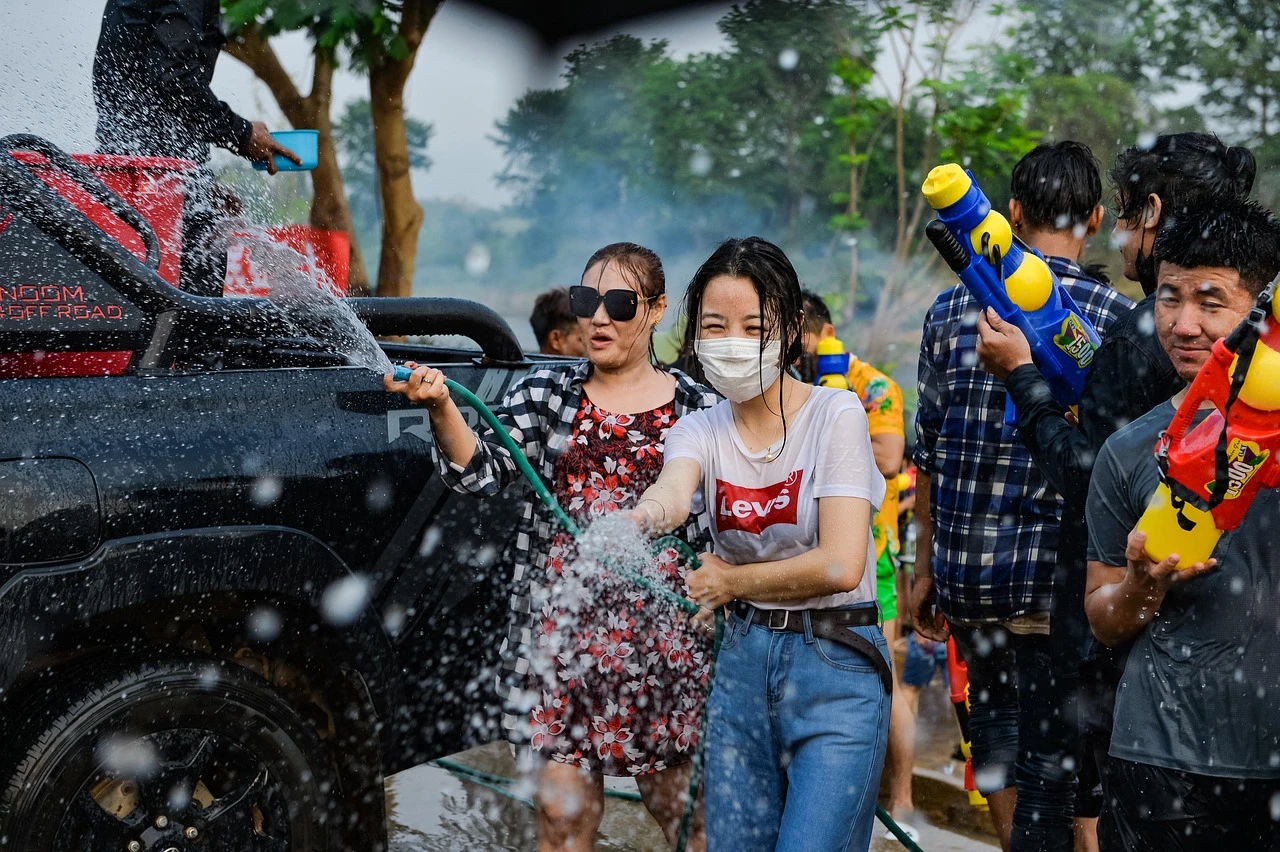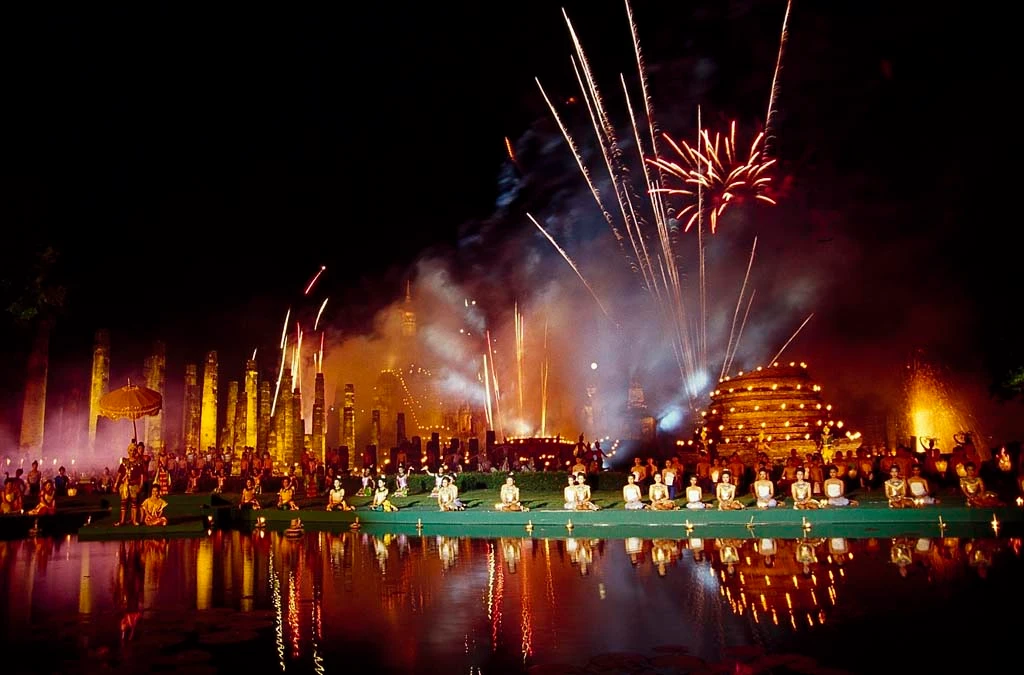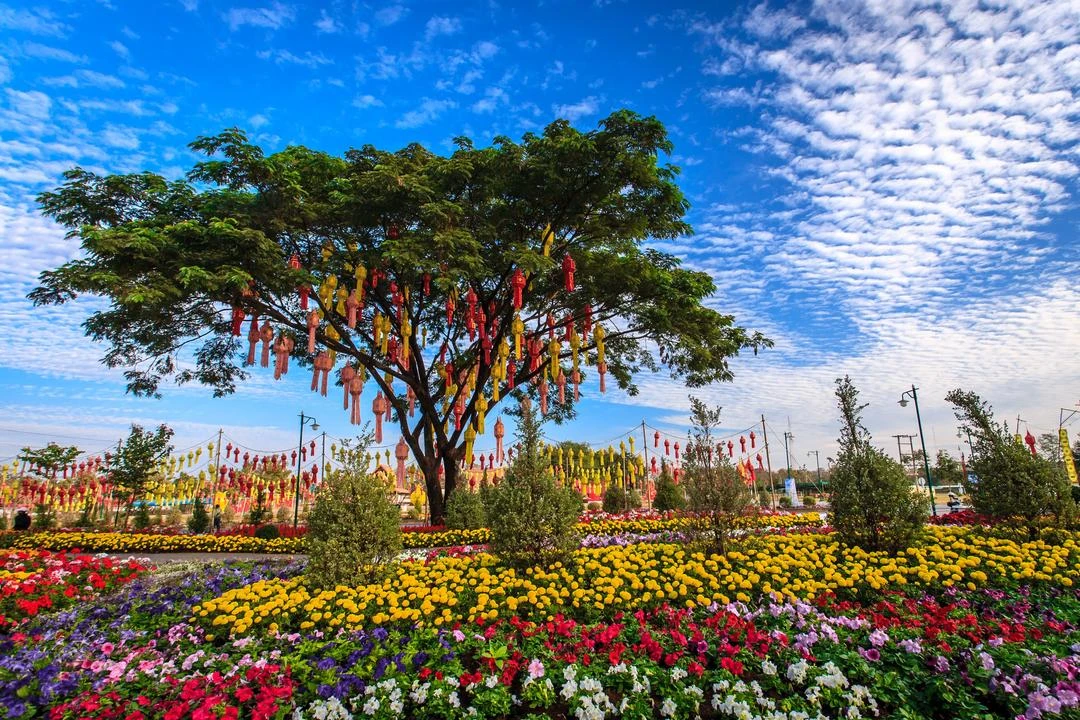From the chaotic, water-soaked streets of Songkran to the serene, candlelit glow of Yi Peng, Thai festivals are a breathtaking display of culture, faith, and pure joy. This guide will take you through the most spectacular celebrations in the Land of Smiles, revealing the meaning behind the magic and how you can experience them for yourself. Prepare to be immersed in a world where tradition comes alive in the most vibrant ways.

Songkran (Thai New Year), Nationwide
Celebration: April 13-15
The most famous Thai festival, Songkran marks the traditional Thai New Year. What began as a gentle ritual where water was poured over the hands of elders and Buddha images as a sign of respect has evolved into a country-wide water fight. For 3 days (more in some places), the streets fill with people armed with water guns, hoses, and buckets, symbolically washing away the misfortunes of the past year. It is also a time for family reunions, visiting temples, and building sand chedis (stupas) at riverbanks.
Rocket Festival (Bun Bang Fai), Northeastern Thailand
Celebration: May
Usually held during the second week of May in the provinces of Yasothon and Ubon Ratchathani, the ‘Boon Bang Fai’ festival is not so much a celebration as it is a request to the rain god for plentiful rains during the rice planting season. Legend has it that the rain god Vassakan would bless paddy farmers who send him offerings of fire. In modern times, farmers send home-made rockets to the heavens. An average rocket is about 9m in length with 20 to 25 kg of gunpowder in it. Needless to say, there’s always lots of singing and dancing before take-off!
Visakha Bucha Day, Nationwide
Celebration: May/June (on the full moon of the 6th lunar month)
This is one of the most sacred days in Buddhism, commemorating the birth, enlightenment, and passing of the Lord Buddha. Temples across the country hold special ceremonies. Devout Buddhists will visit to make merit, listen to sermons, and participate in a candlelit procession called wian tian, where they walk clockwise around the temple’s main chapel three times, holding incense, a candle, and lotus flowers.

Loi Krathong & Yi Peng, Nationwide (most spectacular in Chiang Mai)
Celebration: November (on the full moon of the 12th lunar month)
Loi Krathong is the ‘Festival of Lights’, where people gather at rivers, lakes, beaches, and canals to release beautiful, hand-made floating baskets (krathong), often containing a candle, incense, and a coin, to honour the water goddess and float away their sins and bad luck. In the northern city of Chiang Mai, it coincides with the Yi Peng festival, where thousands of large paper lanterns (khom loi) are released into the night sky, creating an utterly breathtaking spectacle. It symbolizes letting go of negativity and making wishes for the future.
Longboat Racing, Nationwide
Celebration: September/October
This traditional race is held to mark the end of the Buddhist Rains Retreat when the water level in the rivers is at its highest. Considered a national sport, the history of longboat racing in Thailand can be traced back to 600 years ago. Racing boats are usually made from dug out tree trunks and can accommodate up to 60 oarsmen sitting in a double row. The provinces of Phichit, Phisanuloke, Nan, Angthong, Pathumthani, Surat Thani, and Ayutthaya are most famous for this race.
Phuket Vegetarian Festival
Celebration: September/October (9th lunar month)
Something to do when not scuba diving in Phuket, this celebration is held during the 9th month of the Chinese calendar when Thais with Chinese ancestry undergo a 10 day vegetarian diet and perform various rituals at Chinese temples. According to locals, the festival originated from the Fujian Province in Southeast China. Devout participants dress in white, observe strict rules to purify their minds and bodies, and perform incredible acts of self-mortification such as climbing knife-blade ladders, walking on hot coals, and street processions where they pierce their cheeks and bodies with various objects while in a trance. Don’t try this one at home.

Chiang Mai Flower Festival, Chiang Mai
Celebration: First weekend of February
The ‘Rose of the North’ truly blooms during this vibrant 3-day event. The city’s temperate climate allows for stunning displays of flowers, especially orchids and damask roses. The highlight is a grand parade featuring elaborate floats completely covered in fresh flowers, traditional dance performances, and the Flower Festival Queen. The event is held in the public parks around the old moat and is a beautiful celebration of nature’s beauty.
Rambutan Fair, Surat Thani
Celebration: August
What’s a rambutan, you might wonder? It’s a small, hairy little fruit, red or yellow when ripe, green when not. Its flesh is white, and reminds most of a lychee. The story goes that the first rambutan tree was planted in Surat Thani in 1926; since then the Thais have celebrated the arrival of the rambutan with exhibitions of local produce and ornamental plants, rambutan and fruit floats, and demonstrations of trained (presumably Thai) monkeys harvesting coconuts.
The Queen’s Birthday / Mother’s Day, Nationwide
Celebration: August 12
Thais have a tremendous amount of respect for their Royal Family. The Queen’s birthday is also celebrated nationally as Mother’s Day. Buildings and homes are decorated with portraits of H.M. Queen Sirikit and covered with lights, with the most spectacular displays in Bangkok along Ratchadamnoen Avenue and the Grand Palace. It is a public holiday where people give thanks to their mothers and the Queen.